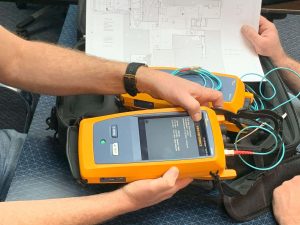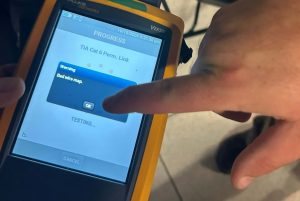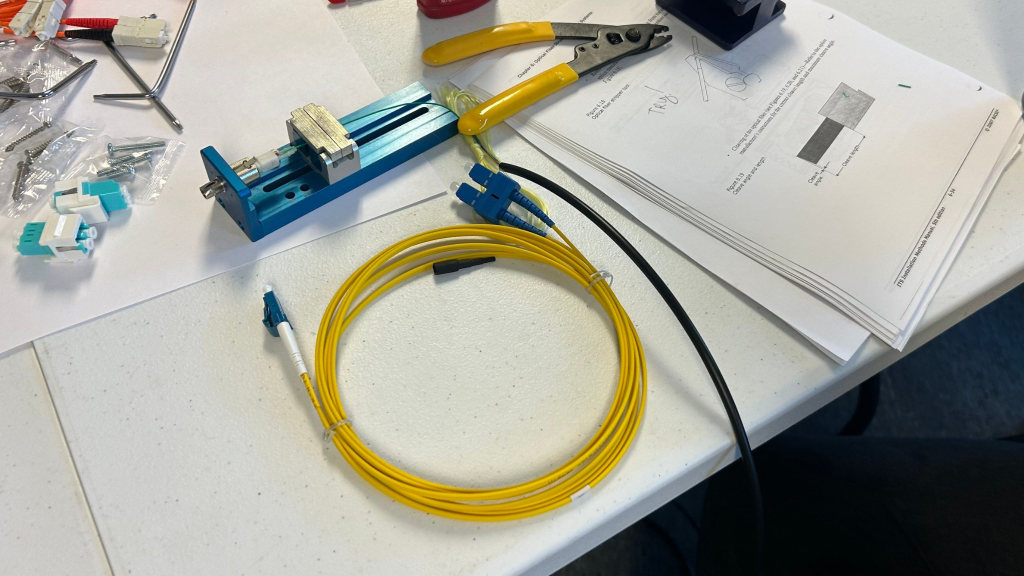Network Certification Tester: The Power of Dual Copper and Fiber!
When it comes to structured cabling installations, accuracy, speed, and dependability are non-negotiable. Whether you’re setting up a data center, updating a commercial building’s infrastructure, or maintaining a warehouse’s backbone, ensuring every cable is certified is crucial. That’s where a network certification tester capable of certifying both copper and fiber cabling comes in—a tool that can transform the way technicians and installers work.

A Network Certification Tester
The Need for Dual-Capability Testing Equipment
As modern networks grow more complex, so do the materials they rely on. Copper remains dominant for shorter runs and workstation connections, while fiber is favored for long distances and backbone cabling. If you’re only using a tester that supports one medium, you’re wasting time, increasing labor costs, and potentially compromising quality.
A tester that supports both copper and fiber helps technicians pivot seamlessly between cable types without switching tools. This not only reduces downtime but boosts productivity—especially in mixed media environments such as schools, hospitals, and data centers.
Accuracy and Compliance with Industry Standards
When it comes to meeting cabling standards, precision matters. Certification testers for both copper and fiber cables ensure every install meets those benchmarks the first time—cutting down on costly callbacks or failed inspections.
Not all testing tools are created equal. Some testers may only provide basic verification, while advanced network certification testers give detailed reports, identifying exact issues like insertion loss and return loss.
These diagnostics are especially vital when you’re working with critical installations, such as fiber optic cabling in enterprise settings or in high-security environments like banks or government offices. Tools with dual-capability allow teams to produce professional-grade reports—often required by clients or general contractors for final approval.
Cost Efficiency and Time Savings
Investing in a certification tester that can verify both copper and fiber might seem like a larger upfront cost, but the long-term savings are undeniable. Instead of purchasing and managing two separate devices, you consolidate testing efforts with a single, comprehensive tool.
Fewer tools mean fewer potential failures, reduced maintenance costs, and simplified training. Imagine sending one technician to complete an entire floor’s worth of mixed media installations with just one device—productivity and ROI instantly go up.
Time is also money. A certification tester that handles both mediums can cut testing time in half—especially when working under tight deadlines for commercial builds.
Enhancing Workflow for Technicians
When your team is equipped with advanced certification tools, it makes their job smoother and more efficient. Dual testers often come with features like touchscreen interfaces, automated test sequences, and easy cloud uploading for test results.
This streamlining can be a huge morale booster. Instead of struggling with older equipment or dealing with errors from mismatched testers, technicians can focus on delivering top-quality installs. That’s crucial when you’re handling critical environments like server rooms or warehouse automation networks.

A Certification Tester Being Used
Future-Proofing Your Infrastructure Services
A certification tester with copper and fiber functionality ensures your services stay relevant as technology evolves. Whether you’re managing a university campus upgrade or a multi-site commercial rollout, your team will be ready for any job.
Certification = Credibility
Let’s face it—clients trust contractors who show proof of performance. Certification testing helps close projects with confidence and professionalism. Offering both copper and fiber testing as part of your deliverables not only differentiates you from competitors but reassures clients that their investment is safe and scalable.
Final Thoughts
A single tester that handles both copper and fiber isn’t just a
convenience—it’s a necessity in today’s fast-paced cabling industry. It saves time, ensures accuracy, improves team workflow, and boosts your business’s professional image.
Whether you’re a network cabling installer or an IT manager overseeing infrastructure upgrades, this kind of investment can dramatically improve your project outcomes.
If you’re ready to bring your network testing to the next level, Bridge Cable has you covered.
For help with any project or installation in the New Jersey or Philadelphia area please call us at 877-832-1206.
For more ideas please visit – https://www.bridgecable.com/services/
For more information and educational content please visit:
https://www.youtube.com/@BridgeCable
Copyright © 2025 Bridge Cable. All rights reserved.
Mailing: 2745 Terwood Road, Willow Grove, PA 19090
Warehouse: 2066 W. Hunting Park Ave, STE 308, Philadelphia, PA 19140
Related Posts

Prevent 911 Outages with Stronger Fiber Optic Cabling Networks

What is the Difference Between Cat6 Wiring and Cat6a?

